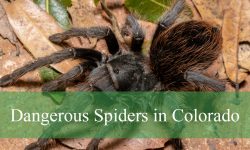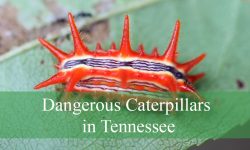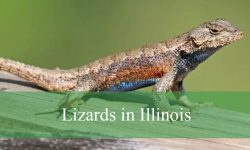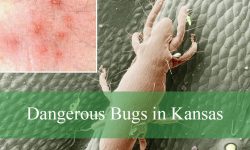Wisconsin is a paradise for birdwatchers, offering forests, lakes, and fields teeming with feathered life. From backyard songbirds to soaring raptors, every walk outside brings a chance to spot something remarkable.
Exploring local parks, riversides, and suburban neighborhoods, you’ll quickly notice the vibrant colors, melodic songs, and unique behaviors of these common birds. Observing them up close is a simple joy that connects you with nature all year round.
Most Common Birds Found in Wisconsin
American Robin

The American Robin is one of the most familiar and widespread birds in Wisconsin, easily recognized by its brick-red breast, gray-brown back, and yellow bill. Adults measure about 9 to 11 inches in length, with a wingspan ranging from 12 to 16 inches. This species is often seen hopping across lawns and fields in search of food, especially after spring rains when earthworms are plentiful.
In terms of behavior, American Robins are highly active and social, frequently forming loose flocks outside the breeding season. Their diet consists mainly of earthworms, insects, and a wide variety of berries during fall and winter. They are ground foragers and can often be observed tilting their heads to detect prey beneath the soil.
Robins are well known for their cheerful and melodious song, which is among the first bird songs heard at dawn in Wisconsin during spring and summer. They nest in a wide range of habitats, including suburban yards, woodlands, and parks. In Wisconsin, they are abundant statewide from early spring through late fall, with some individuals staying through mild winters.
Northern Cardinal
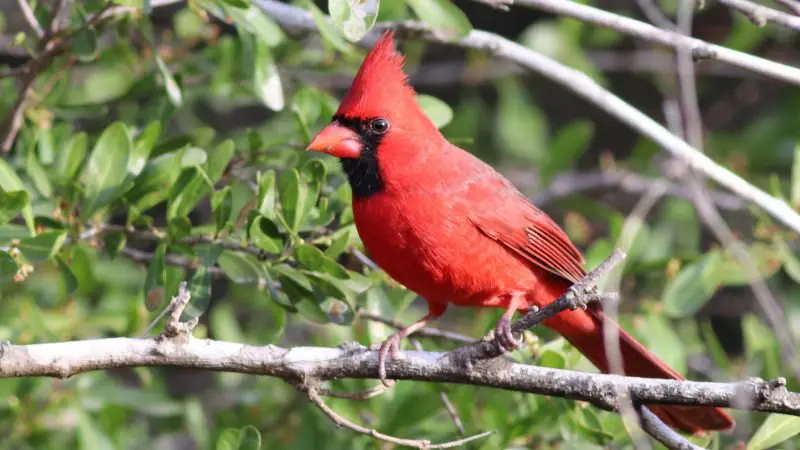
The Northern Cardinal is a striking bird easily spotted in Wisconsin due to the male’s vivid red plumage and the female’s warm brown tones accented with touches of red. Both sexes share a distinctive crest on the head and a thick, orange-red bill. They measure about 8 to 9 inches long with a wingspan of 10 to 12 inches, making them medium-sized songbirds.
Behaviorally, cardinals are territorial during the breeding season, with males often singing from high perches to defend their area. They are primarily seed-eaters but also consume fruits and insects, especially during the summer months when feeding their young. Cardinals are year-round residents in Wisconsin, which means they bring color to backyards even during snowy winters.
Their clear, whistled songs are easily recognized and often described as sounding like “cheer, cheer, cheer” or “birdie, birdie, birdie.” They inhabit woodland edges, gardens, and residential areas where dense shrubs provide cover. Cardinals are common across Wisconsin, particularly in southern and central parts, where bird feeders often attract them throughout the year.
Black-capped Chickadee

The Black-capped Chickadee is a small, energetic bird with a distinctive black cap and bib, white cheeks, and soft gray wings and back. At about 5 inches in length with a wingspan of 6 to 8 inches, it is among the smallest birds regularly seen in Wisconsin. Despite its size, the chickadee is bold and curious, often approaching humans more closely than many other species.
These birds are highly active foragers, flitting through trees and shrubs in search of insects, spiders, and seeds. During colder months, they readily visit backyard feeders, where they are fond of sunflower seeds and suet. Chickadees are known for their ability to hide food in bark crevices, remembering hundreds of storage spots throughout the season.
Their vocalizations include the familiar “chick-a-dee-dee-dee” call and a clear, whistled “fee-bee” song during spring. Black-capped Chickadees thrive in forests, woodlots, and suburban landscapes across Wisconsin and remain in the state year-round. They are especially beloved for their friendly presence during the long northern winters.
Blue Jay
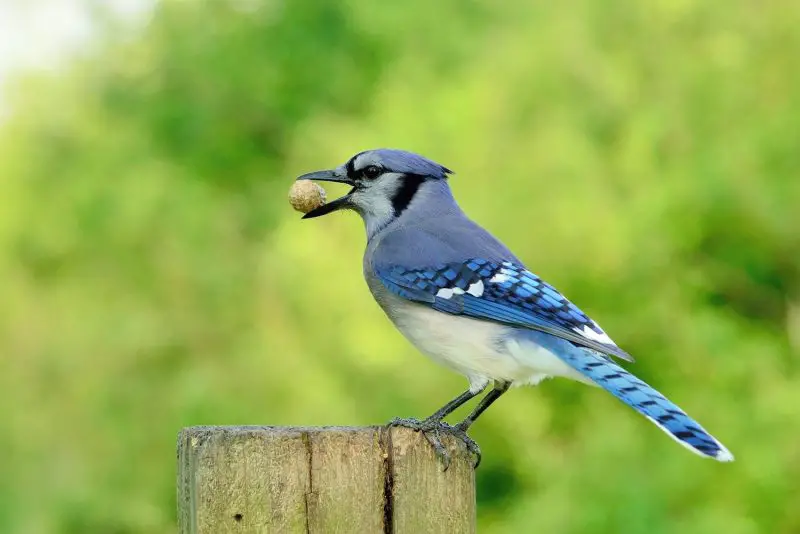
The Blue Jay is one of the most striking birds in Wisconsin, recognized by its bright blue plumage, white underparts, and black necklace-like markings around the neck. Measuring about 9 to 12 inches long with a wingspan of 13 to 17 inches, it is a fairly large songbird. Its crest is often raised or lowered depending on mood, signaling aggression, curiosity, or calmness.
Blue Jays are intelligent and resourceful, frequently imitating the calls of hawks to scare away competitors. They are omnivorous, feeding on acorns, seeds, nuts, insects, and occasionally small vertebrates. They are also known for caching acorns, which contributes to forest regeneration. Their assertive behavior often dominates bird feeders, though they remain fascinating to watch.
Their calls are loud and varied, ranging from harsh “jay-jay” cries to melodious whistles. Blue Jays are common across Wisconsin, especially in woodlands, parks, and suburban neighborhoods. They remain in the state year-round, adding vibrant flashes of blue to both summer greenery and winter snow.
Mourning Dove
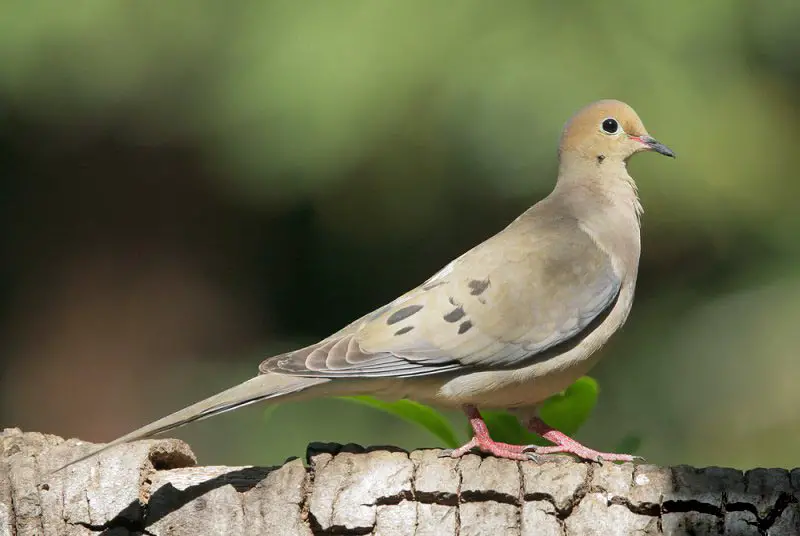
The Mourning Dove is a graceful, slender bird with soft gray-brown plumage, a long pointed tail, and black spots on the wings. Adults measure about 9 to 13 inches in length with a wingspan of 17 to 18 inches. Their gentle appearance makes them one of the most widely recognized birds in Wisconsin.
They are ground feeders, primarily eating seeds, and are often seen foraging along fields, roadsides, and backyard feeders. Mourning Doves are fast fliers with pointed wings, producing a distinctive whistling sound when they take off. They are also prolific breeders, raising multiple broods during the warmer months.
Their mournful “cooing” song is a familiar sound throughout Wisconsin, often heard in early mornings and evenings. Mourning Doves inhabit open fields, farmlands, suburban yards, and forest edges across the state. They remain abundant from spring through fall, with many staying year-round in southern Wisconsin where winters are milder.
House Sparrow
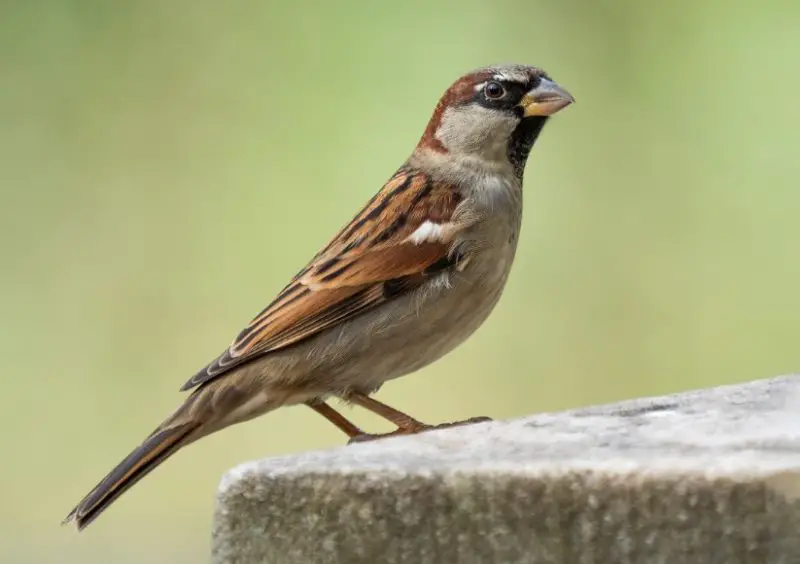
The House Sparrow is a small but robust bird introduced to North America in the 19th century and now widespread in Wisconsin. Males can be identified by their gray crowns, black bibs, and chestnut-colored napes, while females are more plainly brown and streaked. They measure about 6 inches long with a wingspan of 7 to 9 inches.
House Sparrows are highly social and adaptable, thriving in urban, suburban, and agricultural areas. They are opportunistic feeders, consuming seeds, grains, and human food scraps. Their aggressive nesting behavior often displaces native birds from cavities and nest boxes, making them one of the most dominant species in populated areas.
Their vocalizations consist of repetitive “chirp” calls and lively chatter, often heard in large flocks around buildings and streets. In Wisconsin, House Sparrows are found statewide throughout the year, especially near human settlements. Despite their invasive status, they have become a familiar part of the state’s birdlife.
American Goldfinch
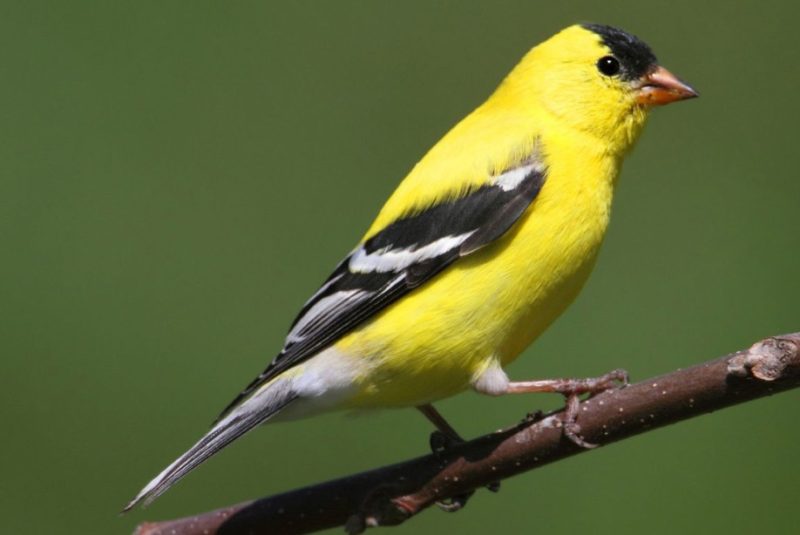
The American Goldfinch is a small, bright bird often called the “wild canary” due to the male’s striking yellow plumage in summer. Females are more subdued in color, with olive-brown tones and hints of yellow. Both sexes have black wings with white markings and a short, conical bill. Adults measure about 4.5 to 5 inches long with a wingspan of 7 to 9 inches.
Goldfinches are highly active and acrobatic, often seen perching on thistles and sunflowers while feeding. Their diet consists mainly of seeds, especially from composite plants like coneflowers and asters. Unlike many birds, they breed later in summer, timing nesting to coincide with peak seed availability.
Their flight call is a distinctive “per-chick-o-ree” that matches their bouncy flight pattern. The American Goldfinch is common across Wisconsin, thriving in open fields, meadows, suburban gardens, and along roadsides. They are year-round residents, though males molt into a duller olive color in winter, blending more easily into their surroundings.
Downy Woodpecker
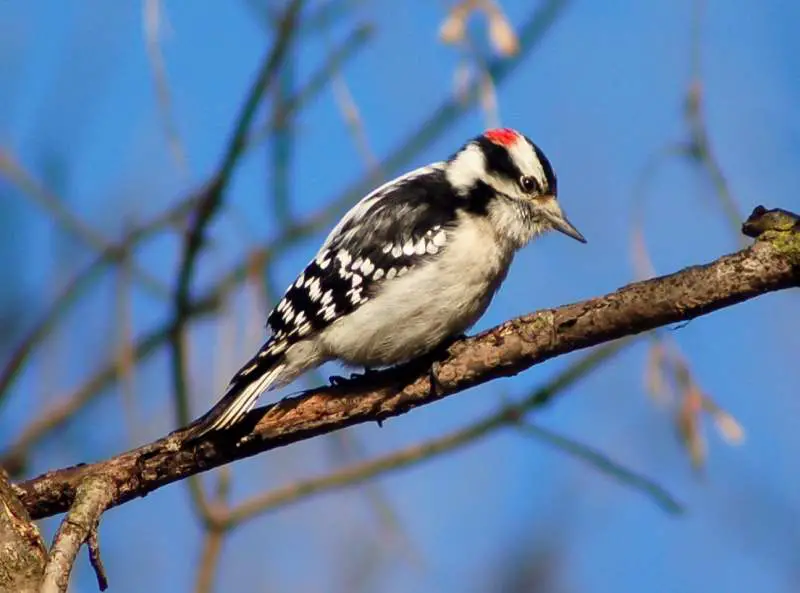
The Downy Woodpecker is the smallest woodpecker in Wisconsin, measuring about 6 to 7 inches long with a wingspan of 10 to 12 inches. It has a black-and-white pattern, with a white underside, black wings marked with white spots, and a bold white stripe down the back. Males have a small red patch on the back of the head, while females lack this feature.
They are agile foragers, often clinging to tree trunks and branches in search of insects, larvae, and seeds. Downy Woodpeckers also visit backyard feeders, where they are frequent consumers of suet, peanuts, and sunflower seeds. Their small size allows them to exploit plant stems and weed stalks that larger woodpeckers cannot.
Their call is a sharp “pik” sound, and their drumming on trees is a common sound in Wisconsin’s forests and neighborhoods. Downy Woodpeckers are found statewide year-round, inhabiting woodlands, orchards, and suburban areas. Their adaptability makes them one of the most familiar and beloved woodpeckers in the state.
Red-bellied Woodpecker

The Red-bellied Woodpecker is a medium-sized bird, about 9 to 10.5 inches long with a wingspan of 15 to 18 inches. Despite its name, the reddish tint on its belly is often faint and hard to see. Its most striking features are the bold black-and-white barred back and the bright red cap, which extends from the bill to the nape in males and only to the crown in females.
These woodpeckers are versatile feeders, eating insects, nuts, fruits, and seeds. They frequently store food in tree crevices and are known for their acrobatic movements as they cling to tree trunks and branches. Red-bellied Woodpeckers also visit backyard feeders, especially for suet and sunflower seeds.
Their call is a rolling “churr” sound, often heard before the bird is seen. In Wisconsin, they are common in southern and central parts of the state but less frequent in the far north. They prefer woodlands, parks, and residential areas with mature trees, where they are present year-round.
Hairy Woodpecker
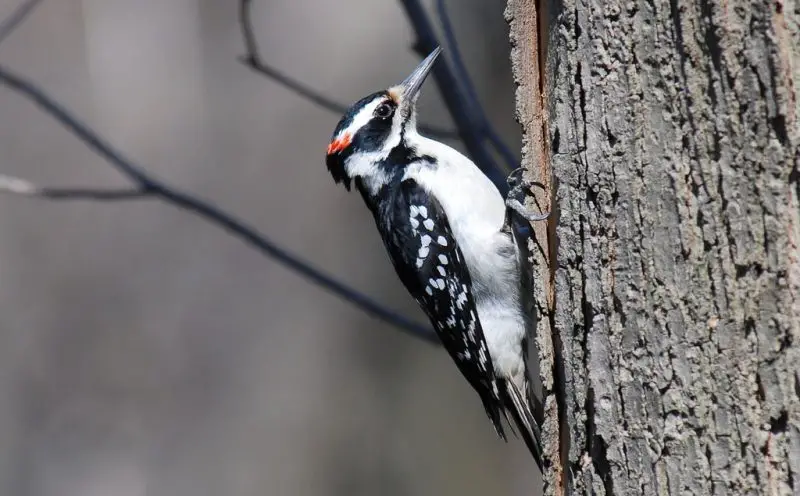
The Hairy Woodpecker looks similar to the Downy Woodpecker but is larger, measuring about 9 to 10 inches in length with a wingspan of 15 to 16 inches. It has a black-and-white plumage pattern, with a white underside, a bold white back stripe, and black wings dotted with white spots. Males have a small red patch on the back of the head, which females lack.
Hairy Woodpeckers are strong foragers, using their longer bills to dig into tree bark in search of insects and larvae. They also eat seeds and nuts and may visit suet feeders during winter. They are often seen in mature forests, woodlots, and wooded suburban areas, sometimes side by side with Downy Woodpeckers.
Their call is a sharp, high-pitched “peek,” and their drumming is louder and slower compared to the Downy’s. Hairy Woodpeckers are found across Wisconsin throughout the year, though they are more abundant in large forested regions than in open or heavily urbanized areas.
Pileated Woodpecker
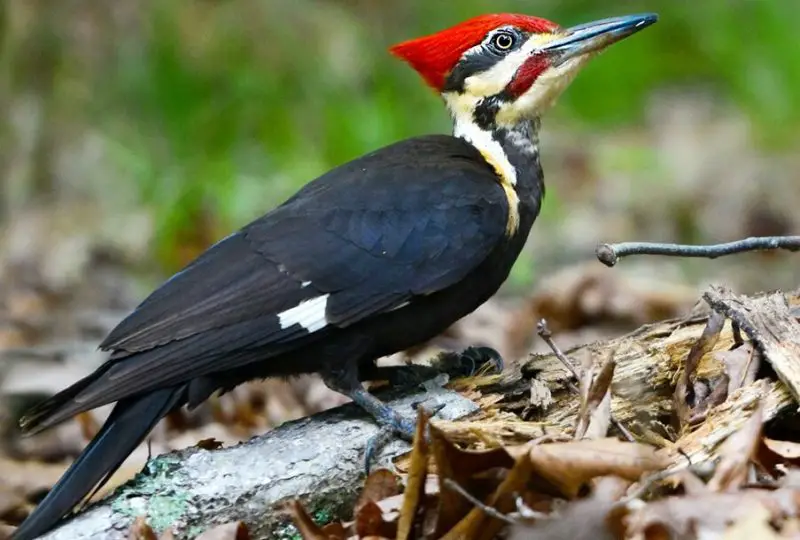
The Pileated Woodpecker is the largest woodpecker in Wisconsin, measuring 16 to 19 inches in length with a wingspan of 26 to 30 inches. It is unmistakable with its striking black body, white wing patches, and a tall red crest. Males also show a red stripe on the cheek, while females have a black one.
These woodpeckers are powerful excavators, creating large rectangular holes in trees to extract carpenter ants and beetle larvae. Their strong drumming echoes through forests, and they are vital to woodland ecosystems, as their abandoned cavities provide shelter for many other species. They also eat fruits, nuts, and berries.
Their loud “kuk-kuk-kuk” call is often described as sounding like wild laughter. Pileated Woodpeckers inhabit mature forests, river corridors, and wooded swamps throughout Wisconsin. They are present year-round but are more often heard than seen due to their preference for large, forested tracts.
White-breasted Nuthatch
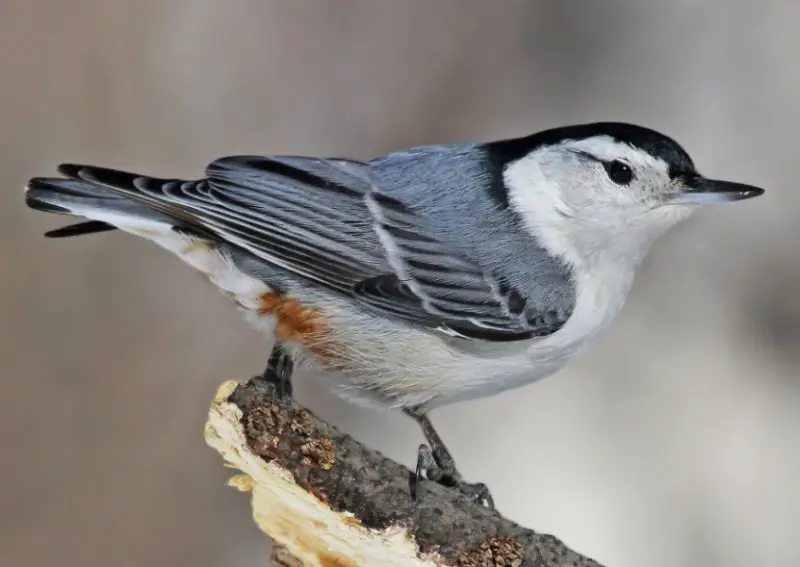
The White-breasted Nuthatch is a compact bird, about 5 to 6 inches long with a wingspan of 8 to 10 inches. It has a striking appearance with a white face and underparts, a black cap, and blue-gray upperparts. Its long, pointed bill and habit of creeping headfirst down tree trunks make it easy to identify.
Nuthatches feed mainly on insects during summer and switch to seeds and nuts in winter. They often wedge food into bark crevices and hammer it open with their bills. They are frequent visitors to backyard feeders, especially enjoying sunflower seeds and peanuts.
Their call is a nasal “yank-yank” sound, repeated in a series. White-breasted Nuthatches are year-round residents in Wisconsin and can be found in deciduous forests, wooded suburbs, and parks. Their adaptability and lively behavior make them a common and welcome sight across the state.
Red-breasted Nuthatch
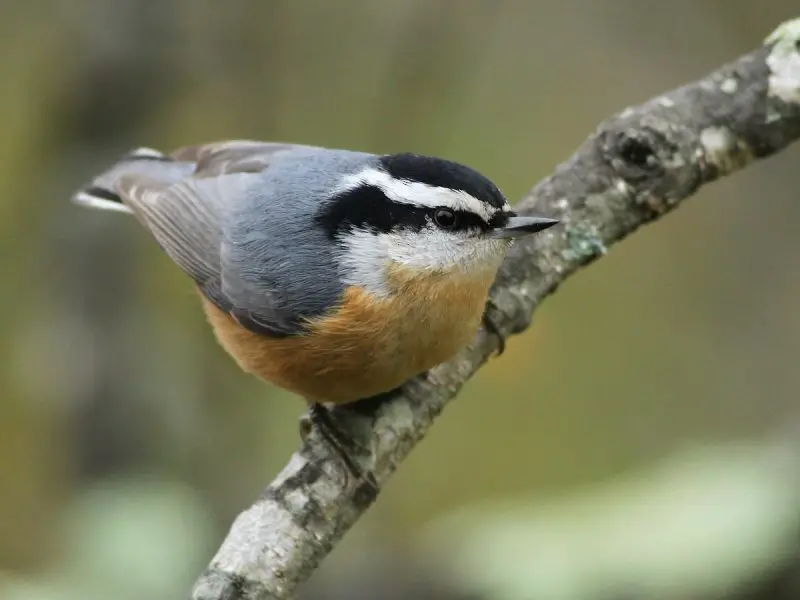
The Red-breasted Nuthatch is a small, compact bird measuring about 4.5 inches long with a wingspan of 8 inches. It has a striking appearance with a bluish-gray back, a white face marked by a bold black eye stripe, and a rusty-red underside that gives the species its name. Its bill is slender and slightly upturned, perfect for prying insects from bark.
This species is highly acrobatic, often seen climbing both up and down tree trunks in search of insects and seeds. Red-breasted Nuthatches also cache food, tucking away seeds in bark crevices for later use. They are frequent visitors to backyard feeders, particularly attracted to sunflower seeds, peanuts, and suet.
Their call is a distinctive nasal “yank-yank,” higher-pitched and more rapid than the White-breasted Nuthatch. In Wisconsin, they are more common in northern coniferous forests but can be found statewide, especially in winter when some individuals migrate southward. They are year-round residents in the north, bringing lively activity to pine and spruce stands.
Tufted Titmouse
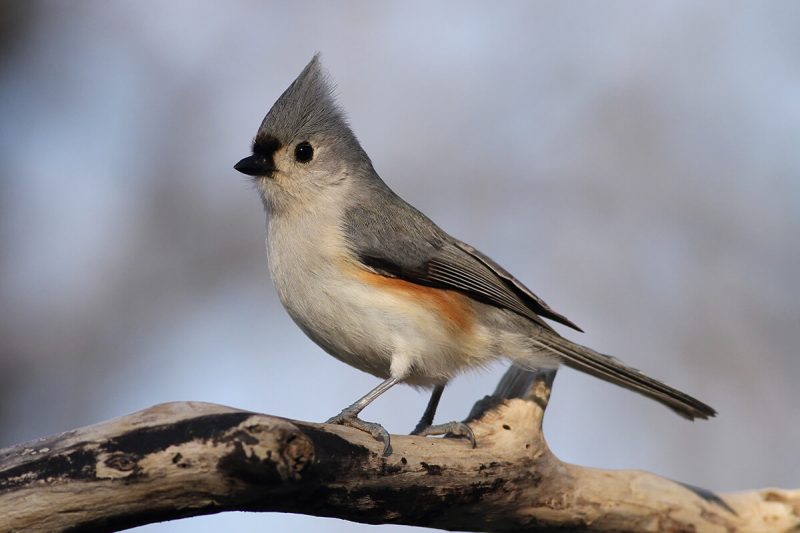
The Tufted Titmouse is a small, energetic bird, measuring about 6 inches in length with a wingspan of 8 to 10 inches. It is easily recognized by its soft gray plumage, white underparts, large black eyes, and distinctive crest on its head. A small black patch just above the bill adds to its charming appearance.
These birds are curious and active foragers, often seen in mixed flocks with chickadees and nuthatches. They feed on insects, seeds, nuts, and berries, and are frequent visitors to backyard feeders where they particularly enjoy sunflower seeds and peanuts. Like chickadees, they sometimes store food for later consumption.
Their song is a clear, whistled “peter-peter-peter,” and their calls include sharp notes used to communicate within flocks. In Wisconsin, Tufted Titmice are most common in the southern and central parts of the state, as they prefer deciduous and mixed forests. They are year-round residents where conditions suit them, bringing activity to wooded neighborhoods and parks.
Dark-eyed Junco
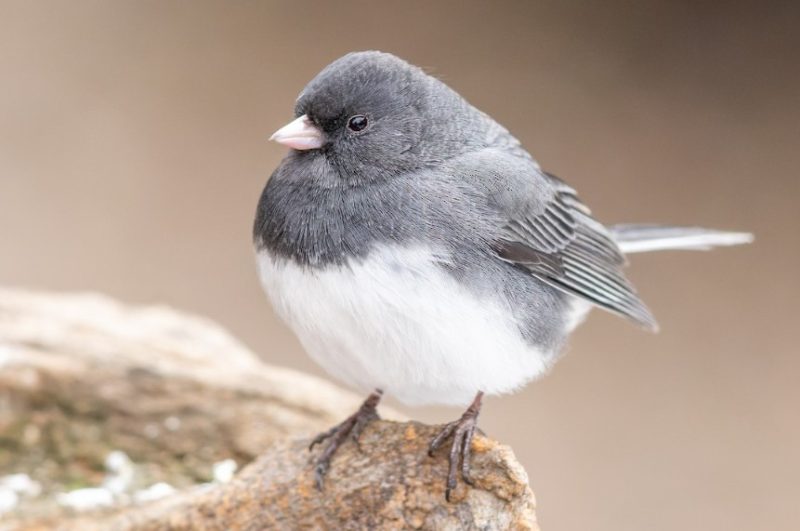
The Dark-eyed Junco is a small sparrow-like bird measuring about 5 to 6.5 inches long with a wingspan of 7 to 10 inches. It is easily identified by its slate-gray plumage, white belly, and distinctive white outer tail feathers that flash in flight. The bill is small and pinkish, typical of seed-eating birds.
Juncos are primarily ground feeders, often seen hopping along snowy lawns, forest floors, and at the base of feeders. Their diet consists mainly of seeds, though they also consume insects during the breeding season. They are well adapted to cold weather and are one of the most common winter birds in Wisconsin.
Their call is a sharp “tseet,” and their song is a simple musical trill. Dark-eyed Juncos breed in northern forests and higher elevations, but in Wisconsin, they are primarily winter residents. Large flocks arrive each fall, spreading across the state until spring migration takes them north again.
Song Sparrow
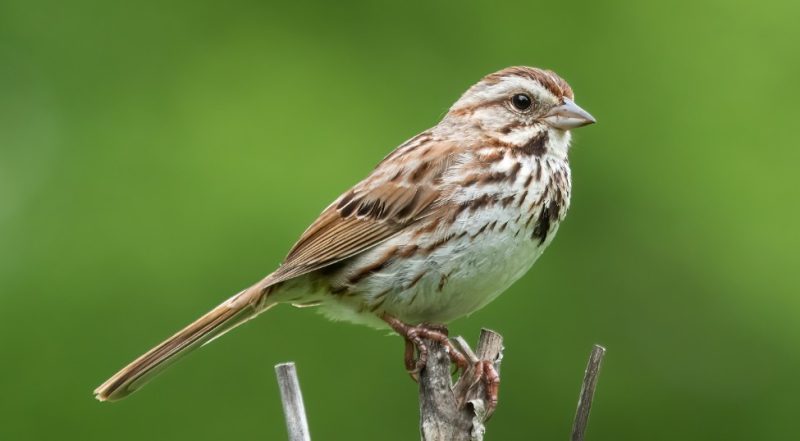
The Song Sparrow is a medium-sized sparrow about 5.5 to 7 inches long with a wingspan of 7.5 to 9 inches. It has streaked brown and gray plumage, a rounded head, and a long, rounded tail. A distinguishing feature is the central dark spot on its heavily streaked breast.
Song Sparrows are versatile foragers, feeding on seeds, insects, and small fruits. They are often seen scratching in leaf litter or hopping along the ground in brushy habitats. Their adaptability allows them to thrive in a wide range of environments, from wetlands to suburban backyards.
Their song is a series of cheerful, varied notes that begins with a few clear whistles followed by trills and buzzes. In Wisconsin, Song Sparrows are abundant during spring and summer, breeding in open habitats across the state. Some individuals remain in southern regions year-round, while most migrate south for the winter.
Chipping Sparrow
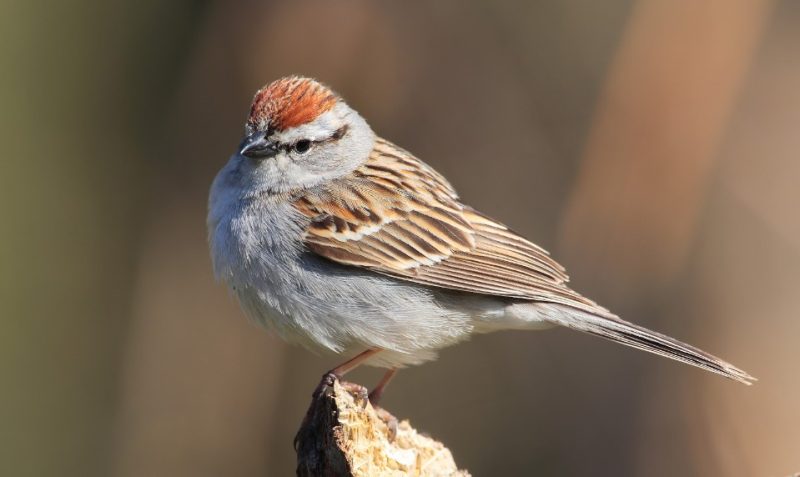
The Chipping Sparrow is a small, slender bird measuring about 5 inches in length with a wingspan of 8 inches. In breeding plumage, it shows a bright rusty-red cap, a clear gray breast, and a bold black eye line across a white face. Its neat appearance makes it one of the easiest sparrows to identify.
These sparrows feed mainly on seeds but shift to insects during the breeding season. They forage on the ground in open areas and frequently visit feeders, especially for cracked corn and millet. Their light and active movements often make them appear restless.
The song of the Chipping Sparrow is a long, dry trill, repeated steadily. In Wisconsin, they are common breeders across the state during spring and summer, inhabiting open woodlands, parks, gardens, and grassy areas with scattered trees. Most migrate south in the fall, returning each spring in large numbers.
White-throated Sparrow
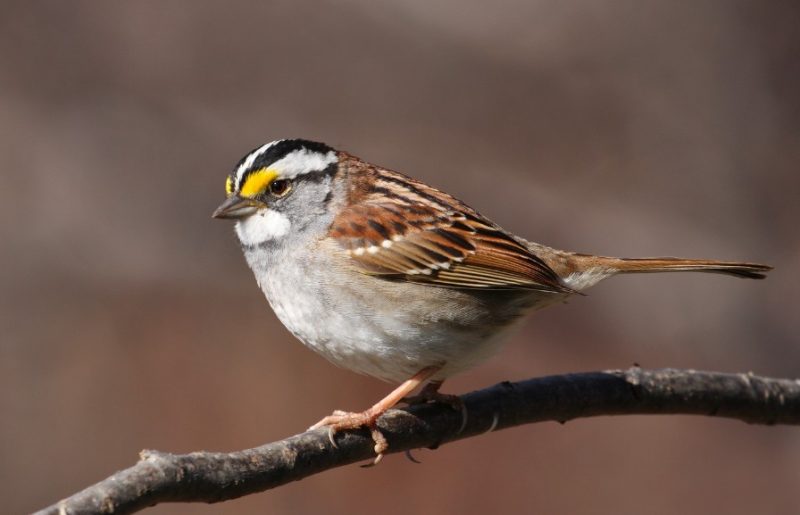
The White-throated Sparrow is a medium-sized bird about 6 to 7 inches long with a wingspan of 9 inches. It is identified by its bold white throat, gray breast, and striking head pattern of black-and-white or black-and-tan stripes. A bright yellow spot between the eye and bill adds to its distinctive look.
These sparrows forage mainly on the ground, scratching for seeds, insects, and berries. They often travel in flocks, especially during migration, and readily visit feeders where millet and sunflower seeds are offered. Their gentle behavior makes them less aggressive compared to House Sparrows.
Their song is a clear, whistled “Old Sam Peabody, Peabody, Peabody,” easily recognizable in spring. In Wisconsin, White-throated Sparrows are common migrants seen during spring and fall, especially in woodlands and shrubby areas. They breed primarily in northern forests, with some populations nesting in the northernmost parts of the state.
House Finch
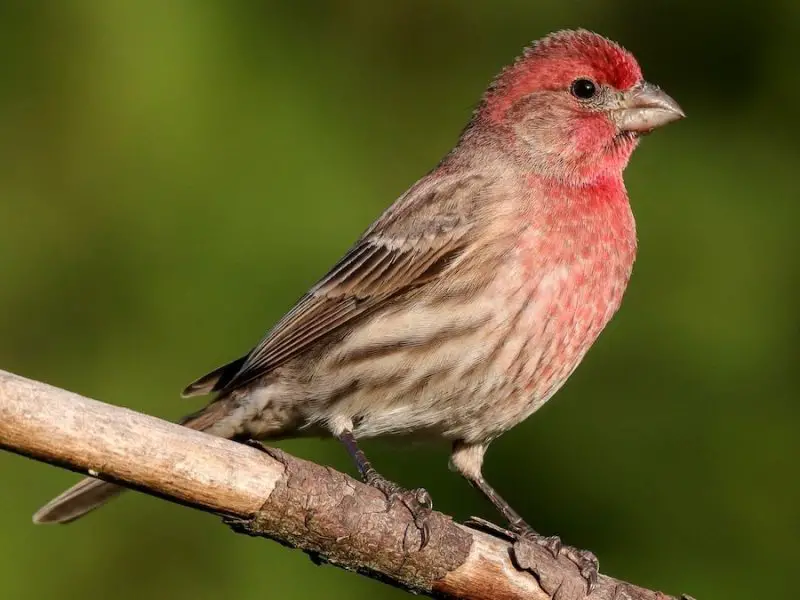
The House Finch is a small but colorful bird, measuring about 5 to 6 inches long with a wingspan of 8 to 10 inches. Males are recognizable by their red foreheads, throats, and chests, which can range from bright crimson to orange or even yellowish depending on diet. Females are streaked brown overall, lacking the red but blending well into shrubby habitats.
House Finches are adaptable and social, often gathering in flocks around feeders, orchards, and suburban areas. Their diet consists mainly of seeds, grains, and fruits, and they are especially fond of sunflower seeds at backyard feeders. They also feed their young regurgitated seeds rather than insects, which is unusual among many small songbirds.
Their song is a cheerful, warbling series of notes and twitters, often ending with a buzzy phrase. In Wisconsin, House Finches are most common in southern and central areas, particularly around towns and cities. They are year-round residents, often staying close to human settlements where food is abundant.
Purple Finch
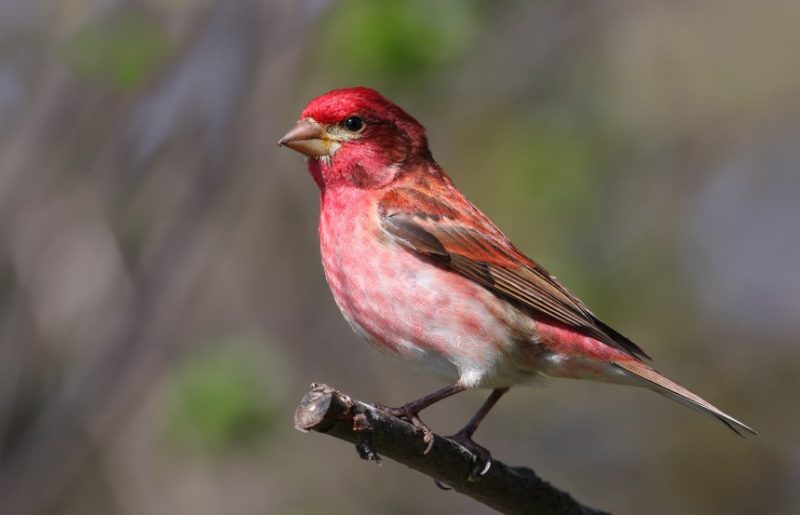
The Purple Finch is a medium-sized finch measuring 5.5 to 6 inches long with a wingspan of 9 to 10 inches. Males are described as looking like they’ve been dipped in raspberry juice, with reddish tones covering the head, breast, and back. Females, in contrast, are brown and heavily streaked, with a bold white eyebrow.
These birds forage on seeds, buds, and berries, often visiting feeders for sunflower seeds. They are more associated with forested habitats than House Finches, preferring coniferous and mixed woodlands. During winter, they form small flocks and sometimes join mixed-species groups.
Their song is a rich, warbling melody, often compared to a sweeter version of the House Finch’s song. In Wisconsin, Purple Finches are fairly common in northern forests, while in other regions they appear mostly during migration. Some remain in the state through winter, especially in areas with abundant conifers.
American Tree Sparrow
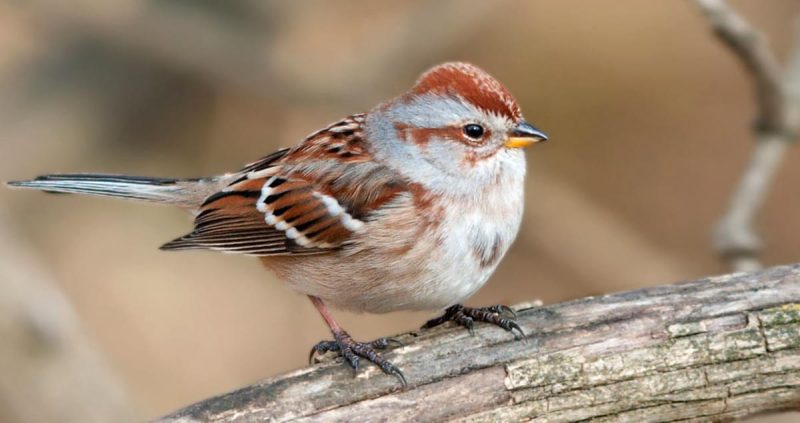
The American Tree Sparrow is a small sparrow about 5.5 to 6.5 inches long with a wingspan of 9 inches. It is identified by its rusty cap, gray face, a dark central breast spot, and a bicolored bill that is yellow below and dark above. Despite its name, it is more often found in open fields and weedy areas than in trees.
Tree Sparrows feed primarily on seeds in winter and shift to insects during the breeding season. They often forage on the ground, scratching through snow to reach weed seeds. In Wisconsin, they are a familiar winter visitor, gathering in flocks across fields, brushy areas, and backyard feeders.
Their song is a sweet, tinkling melody, and their calls include clear, musical notes. American Tree Sparrows breed far to the north in the Arctic tundra, but they are widespread in Wisconsin during the colder months. They typically arrive in late fall and remain until early spring.
Northern Flicker
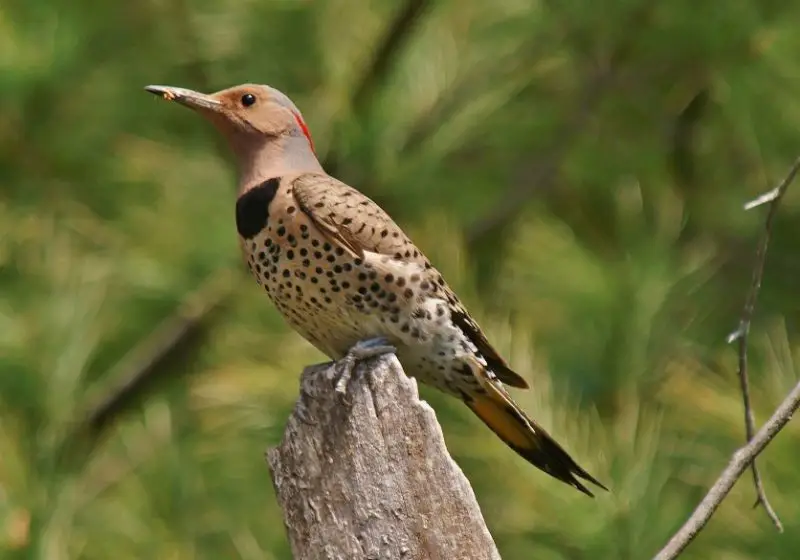
The Northern Flicker is a large, striking woodpecker about 11 to 14 inches long with a wingspan of 16 to 20 inches. Unlike most woodpeckers, it often feeds on the ground, where it searches for ants and beetles. It has a brownish body with black barring on the back, a spotted underside, and a black crescent across the chest.
Flickers are unique in showing color differences by region: in Wisconsin, most belong to the “yellow-shafted” form, displaying bright yellow underwings and tail feathers. They also have a red patch on the nape and a gray face with a black mustache mark on males.
Their call is a loud, repeated “wick-a-wick-a-wick,” and their drumming is also commonly heard in spring. Northern Flickers breed across Wisconsin in woodlands, parks, and open areas with scattered trees. They are migratory, with many leaving the state in winter, though some remain in southern areas year-round.
Eastern Bluebird
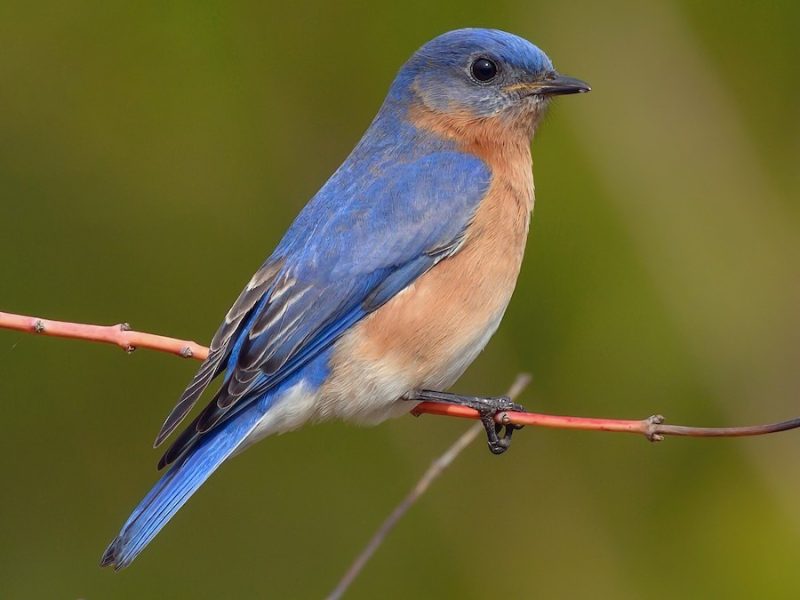
The Eastern Bluebird is a medium-sized songbird about 6.5 to 7 inches long with a wingspan of 9 to 12 inches. Males are brilliant blue with a rusty-red breast and white belly, while females are duller with more gray tones but still show blue wings and tails. Their bright colors make them one of Wisconsin’s most beloved birds.
Bluebirds feed primarily on insects during the breeding season and switch to berries in fall and winter. They often perch on wires or posts before swooping down to catch insects on the ground. Nesting in natural cavities or nest boxes, they are a conservation success story thanks to widespread bluebird house projects.
Their song is a soft, musical “cheer cheerful charmer,” and their calls are sweet and short. Eastern Bluebirds are found throughout Wisconsin in open fields, orchards, and pastures with scattered trees. They migrate south in winter, though small numbers sometimes remain in the southern parts of the state.
Cedar Waxwing
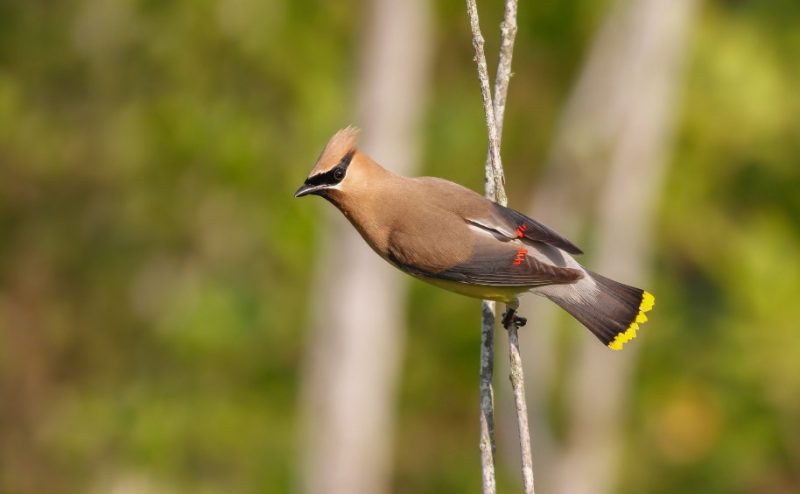
The Cedar Waxwing is a sleek, elegant bird measuring about 6 to 7 inches in length with a wingspan of 9 to 12 inches. It has silky, pale brown plumage that fades to gray, a black mask outlined in white, and a yellow-tipped tail. The waxy red tips on some wing feathers give the species its name.
These birds are highly social, often seen in flocks feeding on berries from cedar, dogwood, or serviceberry trees. Their diet is almost entirely fruit, though they also eat insects in summer. They are known for their habit of passing berries from one bird to another in a line before one finally eats it.
Their call is a high, thin whistle, often given as flocks move overhead. In Wisconsin, Cedar Waxwings are common across the state during summer, breeding in woodlands, orchards, and gardens. Many migrate south in winter, but some remain wherever fruiting trees and shrubs are available.
Gray Catbird
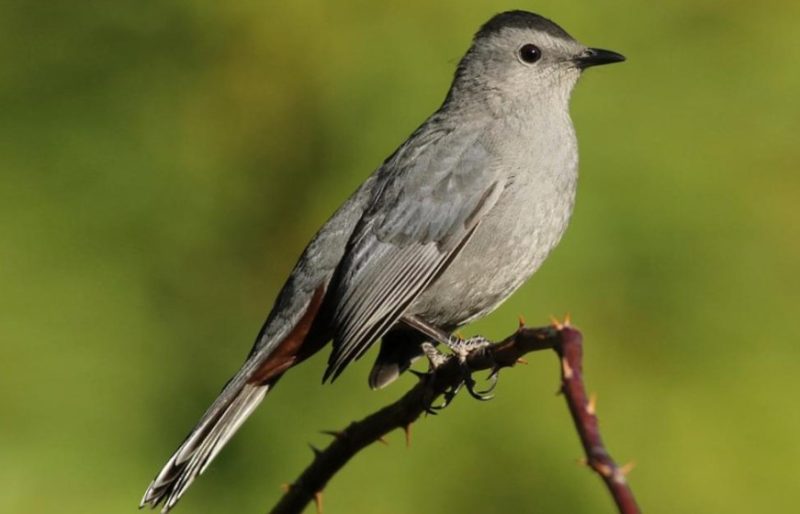
The Gray Catbird is a medium-sized songbird with smooth gray plumage, a black cap, and a subtle rust-colored patch under the tail. Its long tail and slender shape give it a sleek, elegant appearance. Its signature “mewing” call resembles the sound of a cat, often revealing its presence even when hidden among dense shrubs. Gray Catbirds are accomplished mimics, incorporating phrases from other birds into their varied repertoire, making their songs unpredictable and melodious.
These birds prefer dense vegetation such as forest edges, shrubby wetlands, and backyard gardens with thick undergrowth. They forage for insects, berries, and small fruits, moving nimbly through shrubs while occasionally venturing to low branches to search for food. Gray Catbirds are active and bold, but they remain partially hidden, blending well with their surroundings.
In Wisconsin, Gray Catbirds are summer residents, arriving in late April and departing for southern states by September. They are widespread across the state, favoring areas with dense shrubs, thickets, and forest edges. Their presence is often first detected by their distinctive mewing call, and they play a role in seed dispersal through their frugivorous diet.
Brown Thrasher

The Brown Thrasher is a striking medium-sized songbird with reddish-brown upperparts, heavily streaked underparts, long tail, and piercing yellow eyes. Its slightly curved bill is adapted for foraging through leaf litter, making it a skilled ground hunter. The Brown Thrasher is one of North America’s most prolific songsters, capable of singing over a thousand unique song variations. It typically repeats each phrase twice, creating a distinctive and recognizable pattern in woodlands and backyards.
Brown Thrashers favor dense thickets, hedgerows, and woodland edges. They forage on the ground for insects, seeds, and berries, using a sweeping motion with their bill to uncover hidden food. They are cautious and often remain partially concealed, making them more often heard than seen.
In Wisconsin, Brown Thrashers are summer residents primarily in the southern and central parts of the state. They arrive in late April and depart by early October, preferring brushy areas, forest edges, and hedgerows for breeding and nesting. Their loud, complex songs are most prominent during the spring and early summer months.
American Crow
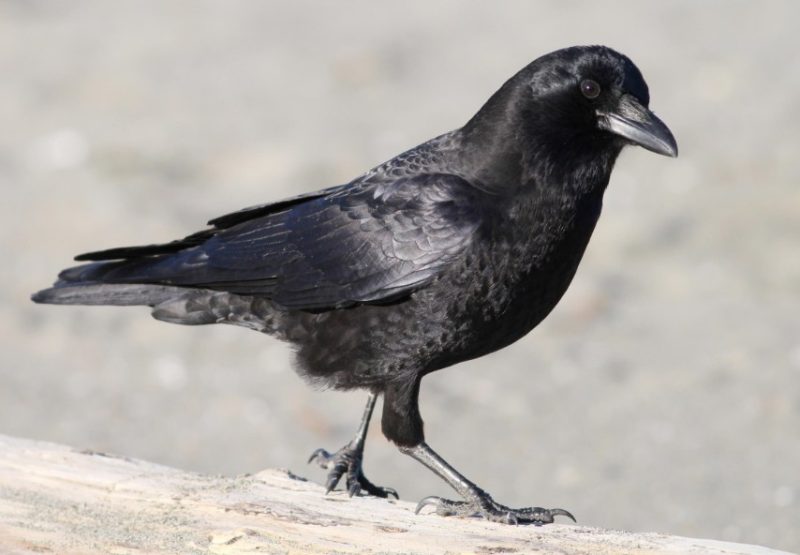
The American Crow is a large, all-black bird with glossy plumage, a stout bill, and a powerful flight. It is highly intelligent, capable of using tools, recognizing human faces, and learning complex behaviors. Crows are social and often gather in family groups or large communal roosts, particularly in the winter months, where thousands of individuals may congregate in a single area.
These birds are highly adaptable, occupying forests, farmland, wetlands, suburban areas, and city environments. Their diet is omnivorous, including insects, seeds, small animals, carrion, and human food scraps. Vocalizations include loud caws, rattles, and soft coos used for communication within flocks.
American Crows are found throughout Wisconsin year-round. They are abundant in open farmland, river valleys, forest edges, and urban areas. Southern Wisconsin often sees higher winter concentrations as crows form large roosting flocks, whereas northern parts of the state maintain smaller resident populations.
Common Grackle
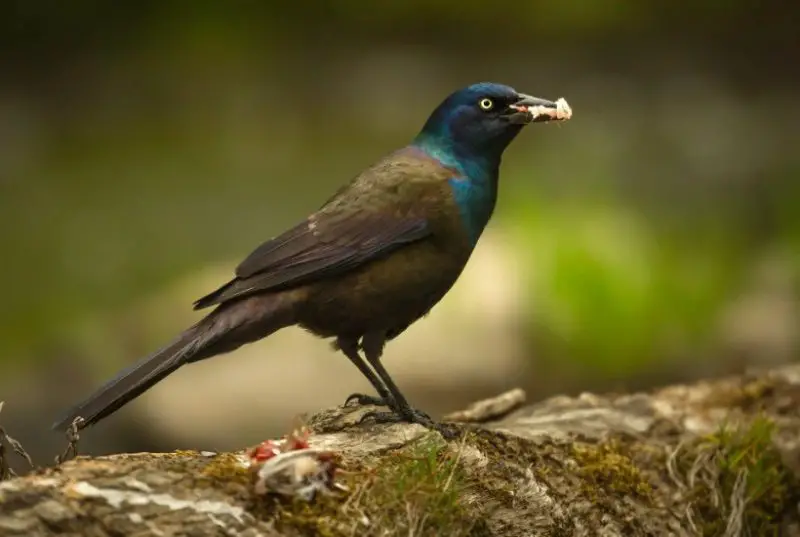
The Common Grackle is a large blackbird with glossy iridescent plumage that shines in shades of purple, green, and bronze. Its long tail and bright yellow eyes make it one of the most visually striking birds in open habitats. Grackles are social and gregarious, often forming large flocks that include other blackbird species, particularly in late summer and fall.
Grackles are omnivorous, feeding on insects, grains, seeds, small vertebrates, and human food. They are bold, often dominating feeders and small birds. Their vocalizations are harsh, metallic, and creaky, making them easy to identify even at a distance. During the breeding season, males display by puffing out feathers and spreading wings to attract mates.
In Wisconsin, Common Grackles are widespread from southern to central regions, inhabiting farmland, wetlands, parks, and suburban areas. Many migrate south in winter, but some may remain in the southern parts of the state where food and open habitats are available.
Red-winged Blackbird
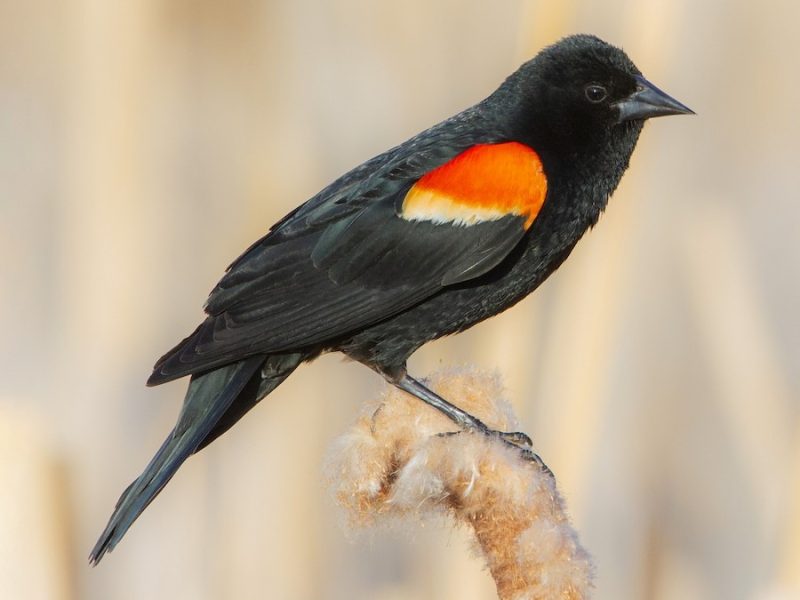
The Red-winged Blackbird is one of the most familiar birds in Wisconsin, with males easily identifiable by glossy black plumage and bright red and yellow shoulder patches. Females are streaked brown and resemble large sparrows, providing camouflage while nesting in marshes and wetlands. Their sexual dimorphism is highly pronounced, making the species easy to distinguish.
Males are highly territorial, especially during the breeding season, often perching on cattails, fence posts, or shrubs to display and sing their loud “conk-la-ree” calls. These displays serve to defend territory and attract females. Red-winged Blackbirds feed primarily on insects during the summer and shift to seeds and grains in the fall and winter.
Red-winged Blackbirds are widespread in Wisconsin, particularly common in marshes, wet meadows, and grasslands with dense vegetation. They arrive in spring, often among the first returning migratory birds, and many remain through summer to breed. Large flocks gather in fall before migrating south, making them one of the most abundant and conspicuous birds in the state.
Baltimore Oriole
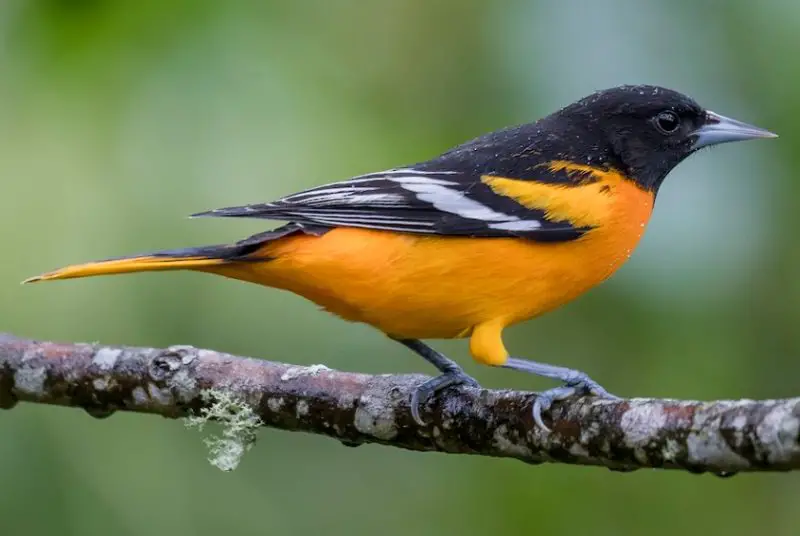
The Baltimore Oriole is a medium-sized songbird measuring about 6.5 to 7 inches in length with a wingspan of approximately 9 to 12 inches. Adult males are instantly recognizable by their brilliant orange underparts, contrasting with a black head, back, and wings, while females and immature birds are paler with yellow-orange underparts and grayish-brown upperparts. Their slender, pointed bills are perfectly suited for feeding on nectar, fruit, and insects. Orioles are active and agile, frequently flitting between tree branches in search of food and building intricately woven, hanging nests suspended from slender branches.
In Wisconsin, Baltimore Orioles feed on insects such as caterpillars, beetles, and grasshoppers during the breeding season, while supplementing their diet with nectar, berries, and fruits. They are often seen visiting backyard feeders that offer orange halves or sugar water. Their foraging behavior is deliberate and precise, sometimes hovering briefly to glean insects or sip nectar. Males sing a series of clear, flutelike whistles that can be heard across open woodlands, forest edges, and parks.
Baltimore Orioles are summer residents in Wisconsin, arriving in late April and departing by August. They are most commonly found in southern and central parts of the state, preferring open woodlands, forest edges, riparian areas, and suburban neighborhoods with mature trees that provide both food and nesting opportunities. Their vibrant plumage and cheerful song make them one of the most celebrated breeding birds in the region.
Eastern Towhee
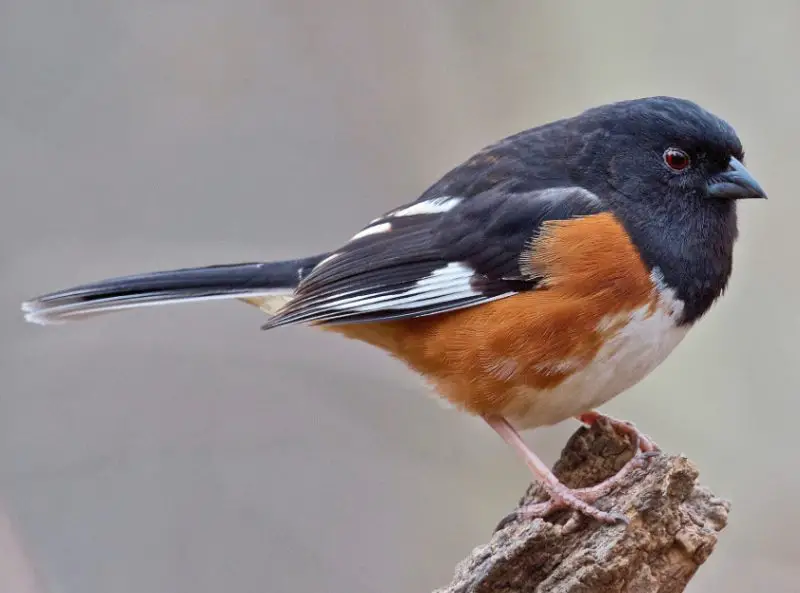
The Eastern Towhee is a medium-sized sparrow-like bird, measuring approximately 7 to 8 inches in length with a wingspan of 10 to 12 inches. Males have striking black heads, backs, and wings with white bellies and rich rufous sides, while females display brown instead of black, giving them a softer overall appearance. They have strong legs and a stout bill adapted for foraging through leaf litter, and their long tails are often flicked or spread while moving along the forest floor.
Eastern Towhees spend much of their time on the ground, scratching through leaf litter and undergrowth to uncover insects, spiders, and seeds. They also feed on berries during late summer and fall. Their distinctive song, a clear “drink-your-tea” trill, is a common sound in the woodlands, brushy fields, and overgrown gardens where they live. Towhees are relatively secretive, preferring dense vegetation for cover while remaining alert for predators.
In Wisconsin, Eastern Towhees are summer residents, most abundant in southern and central regions. They inhabit forest edges, shrubby fields, overgrown pastures, and suburban gardens. They arrive in April and depart by September, using dense thickets to nest and forage. Their striking coloration, ground-foraging behavior, and melodic song make them a favorite among birdwatchers during the warmer months.
Indigo Bunting
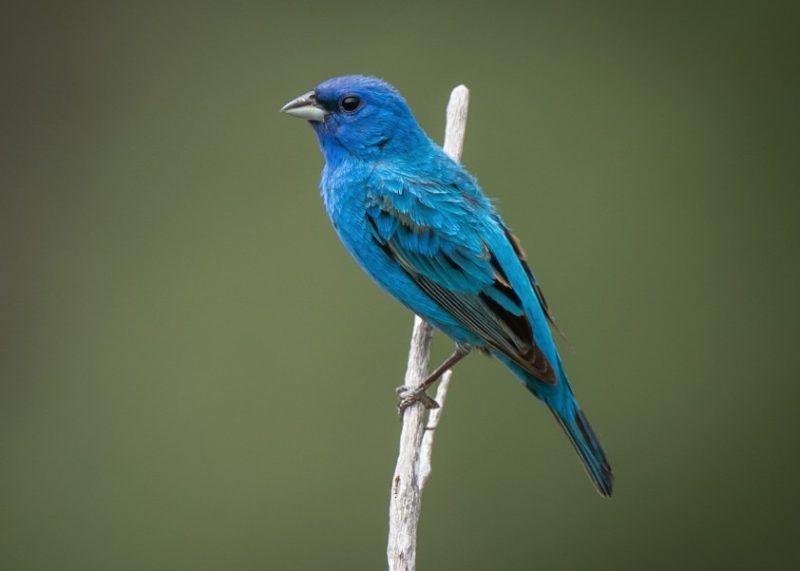
The Indigo Bunting is a small songbird measuring about 4.5 to 5 inches in length with a wingspan of 7 to 9 inches. Adult males display brilliant, vivid blue plumage across the body during the breeding season, while females and immature birds are brown with faint streaks for camouflage. Their small, conical bills are ideal for eating seeds, and their lightweight, agile bodies allow them to catch insects in flight. Indigo Buntings are active and perky, often moving quickly between shrubs, small trees, and fence lines.
These birds feed primarily on insects such as caterpillars, grasshoppers, and beetles during the summer, while seeds and berries become more important in late summer and early fall. They forage both on the ground and among low vegetation, hopping or perching to glean insects from leaves and branches. Their song is a high-pitched, melodic series of clear, sweet notes that males repeat from prominent perches to establish territory and attract mates.
In Wisconsin, Indigo Buntings are summer residents arriving in late April and staying until late August. They prefer forest edges, brushy fields, roadsides, and hedgerows. They are most common in southern and central Wisconsin, where the combination of open spaces and dense shrubs provides ideal feeding and nesting habitats. Their brilliant blue plumage and cheerful, tuneful songs make them one of the most noticeable breeding birds in the state.
Rose-breasted Grosbeak
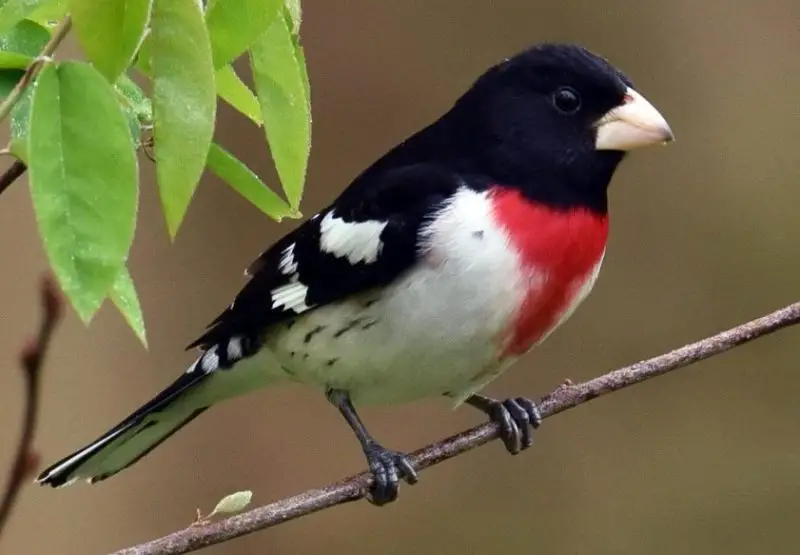
The Rose-breasted Grosbeak is a medium-sized songbird, approximately 7.5 to 8 inches in length with a wingspan of 12 inches. Males have striking black heads, backs, and wings, with white underparts and a vivid rose-red patch on the breast. Females are streaked brown above with pale underparts, resembling large sparrows. Both sexes have stout, conical bills capable of cracking seeds as well as capturing insects. Grosbeaks are active foragers, often moving through trees and shrubs with deliberate motions.
During the breeding season, Rose-breasted Grosbeaks feed heavily on insects such as caterpillars and beetles to provide protein for their young, while seeds, berries, and fruits supplement their diet throughout the year. They forage in trees and shrubs, gleaning insects from leaves or plucking berries. Their rich, melodious song is often compared to a robin’s but sweeter and more fluid, filling forest edges, woodlands, and gardens with complex musical phrases.
In Wisconsin, Rose-breasted Grosbeaks are summer residents from late April to August. They are most common in southern and central parts of the state, inhabiting deciduous forest edges, suburban woodlots, and riparian thickets. Their striking plumage, beautiful song, and active feeding behavior make them highly prized among birdwatchers during the breeding season.
Northern Mockingbird
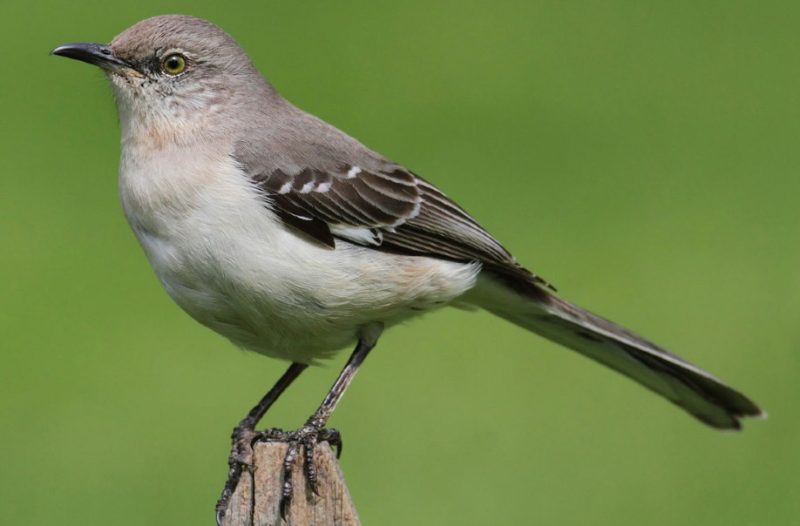
The Northern Mockingbird is a medium-sized songbird measuring about 8 to 10 inches in length with a wingspan of 12 to 15 inches. Adults have gray upperparts, paler underparts, and white patches on the wings that are visible during flight. They are highly recognizable for their long tails and bold, upright posture. Mockingbirds are exceptional vocalists capable of imitating other birds, insects, and even mechanical sounds, often combining hundreds of distinct phrases into long sequences repeated several times.
Mockingbirds are territorial and frequently perch conspicuously on fences, shrubs, or rooftops to defend their area. They feed on insects, berries, and small fruits, gleaning from leaves or foraging on the ground. Their active and alert behavior, along with their ability to mimic almost any sound in their environment, makes them highly visible and audible in the areas they occupy.
In Wisconsin, Northern Mockingbirds are primarily summer residents in the southern portion of the state. They inhabit open fields, forest edges, suburban areas, and parks. Migratory individuals arrive in early spring and depart by fall, while some may remain in the southernmost areas year-round when food and cover are available.
Eastern Phoebe
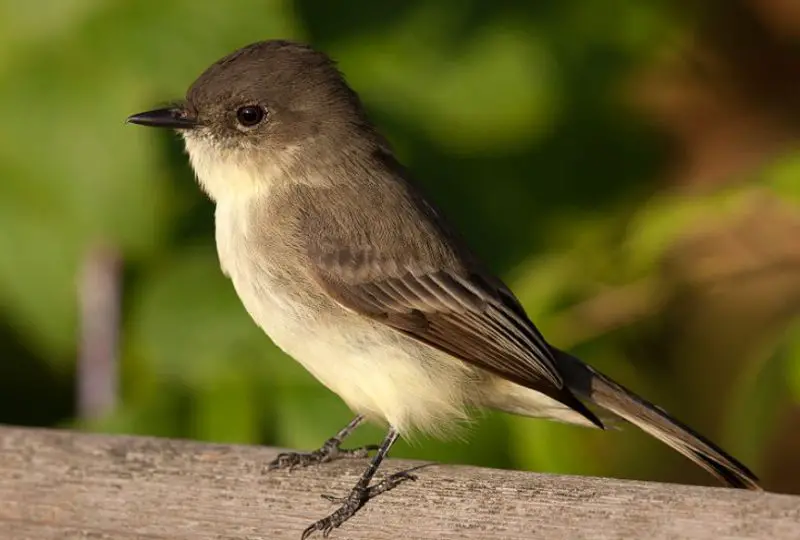
The Eastern Phoebe is a small flycatcher measuring about 5.5 to 6 inches in length with a wingspan of 9 to 10 inches. Its plain gray-brown upperparts and pale underparts are understated, but it is easily recognizable by its characteristic tail-bobbing behavior. Phoebes have slender, slightly rounded bills adapted for catching insects in flight. Their movements are agile and deliberate as they sally from perches to snatch flying prey.
Eastern Phoebes feed almost exclusively on insects such as flies, beetles, and caterpillars, catching them on the wing or gleaning from vegetation. They are among the first migratory birds to return to Wisconsin in early spring, signaling the start of warmer weather. Their call is a raspy “fee-bee,” repeated frequently and giving the species its name. Phoebes build simple mud and grass cup nests under bridges, eaves, and ledges, often near human structures.
In Wisconsin, Eastern Phoebes are widespread summer residents, occurring throughout the state in open woodlands, farmlands, streams, and suburban areas. They remain from early April through September before migrating south for the winter. Their unobtrusive coloration, distinctive behavior, and raspy call make them easy to identify during the breeding season.
Great Crested Flycatcher
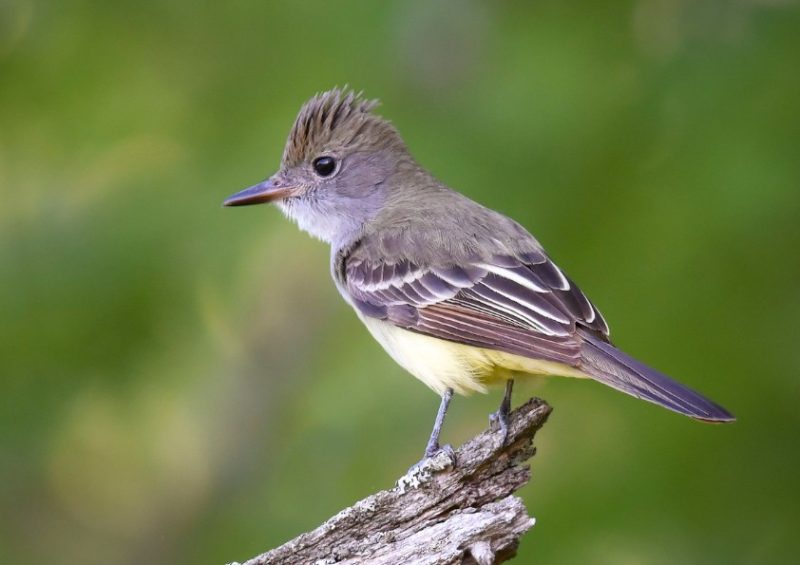
The Great Crested Flycatcher is a medium-sized songbird measuring about 7.5 inches in length with a wingspan of approximately 13 inches. Adults are easily recognized by their olive-brown upperparts, bright yellow belly, gray throat, and the distinctive reddish-brown tail that contrasts with their overall plumage. They have a slightly crest-like appearance on the head and a sturdy, slightly hooked bill adapted for catching flying insects.
These flycatchers are active and acrobatic foragers, often perching conspicuously on branches before darting out to capture insects midair. Their diet mainly consists of flying insects, spiders, and occasionally small fruits. The birds are known for their loud, rolling “whee-eep” calls, which can carry across woodlands and open areas.
In Wisconsin, Great Crested Flycatchers are summer residents found throughout the state, particularly in mature deciduous forests, forest edges, and suburban woodlands with large trees. They arrive in late April and depart by September, nesting in natural cavities or old woodpecker holes. Their bright coloration, energetic behavior, and distinctive call make them noticeable despite the dense foliage they inhabit.
Barn Swallow
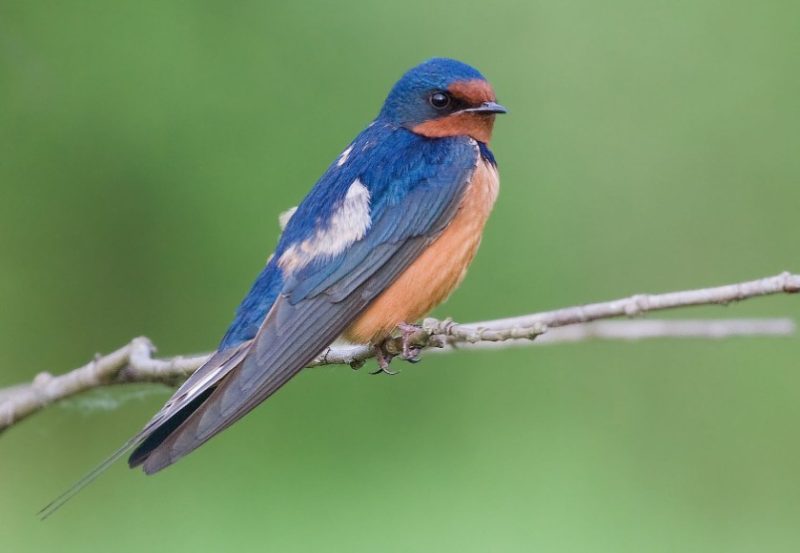
The Barn Swallow is a small, agile bird about 7 inches long with a wingspan of 11 to 13 inches. It is easily recognized by its glossy blue back, rusty-orange throat and forehead, and long, deeply forked tail. Their slender bodies and pointed wings make them excellent fliers, capable of performing acrobatic maneuvers while hunting for insects in flight.
Barn Swallows feed almost exclusively on flying insects, catching them midair with remarkable agility. They often swoop and glide over fields, water bodies, and open areas while hunting. Their song is a cheerful series of twitters and warbles, frequently heard as they patrol their territories and attract mates. These birds are highly social, often nesting in colonies under eaves, bridges, and barns, using mud and grasses to build cup-shaped nests.
In Wisconsin, Barn Swallows are widespread summer residents, arriving in early April and departing by September. They are common in agricultural regions, towns, and near water bodies where open spaces provide ideal hunting grounds. Their striking coloration, graceful flight, and vocalizations make them a familiar and beloved sight across the state.
Tree Swallow
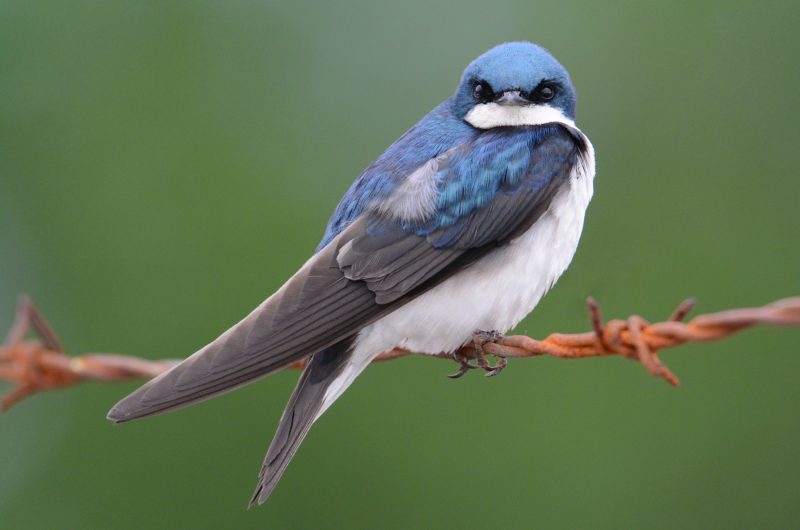
The Tree Swallow is a small songbird measuring about 5 to 6 inches in length with a wingspan of 11 inches. Males have iridescent blue-green upperparts and white underparts, while females are duller with grayish-blue backs. They have slender, pointed wings and small bills designed for catching flying insects, which make them highly agile fliers.
Tree Swallows primarily feed on flying insects, but during cooler months they may consume small berries and seeds. They often perch near open water, scanning the air for prey before darting out in swift, acrobatic flights. Their calls are soft, twittering notes, and males sing a gurgling warble during the breeding season. Tree Swallows nest in tree cavities, nest boxes, and occasionally old woodpecker holes, forming loose colonies during summer.
In Wisconsin, Tree Swallows are abundant summer residents, particularly near ponds, lakes, marshes, and wet meadows throughout the state. They arrive in April and depart by September, playing an important role in controlling insect populations. Their bright plumage and aerial skill make them easy to observe over open water and fields.
Ruby-throated Hummingbird
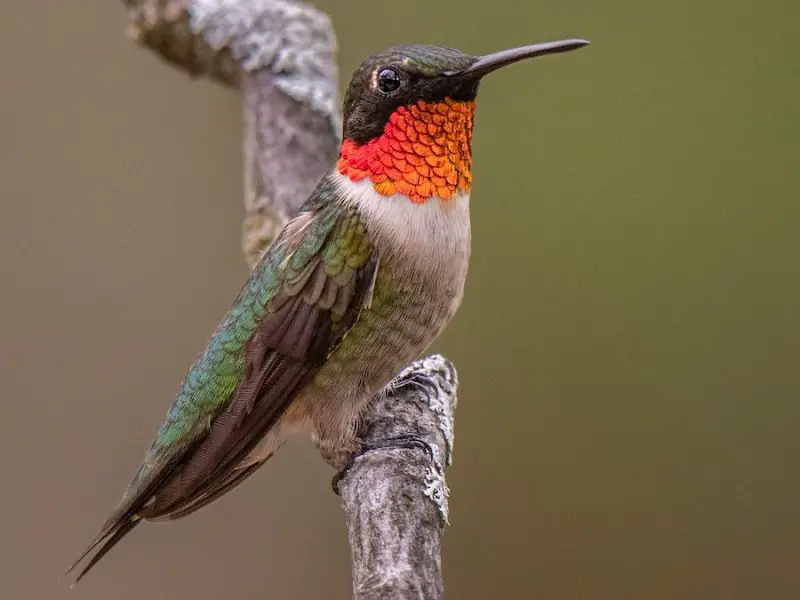
The Ruby-throated Hummingbird is a tiny bird measuring only about 3 inches in length with a wingspan of 3 to 4 inches. Males are easily identified by their iridescent red throat, green back, and grayish-white underparts, while females lack the red throat but have similar green upperparts and pale underparts. Their needle-like bills are perfectly adapted for sipping nectar from tubular flowers.
These hummingbirds are highly energetic and feed primarily on nectar from flowers and feeders, supplementing their diet with small insects and spiders for protein. They are capable of hovering in midair, flying backward, and performing rapid, acrobatic maneuvers while feeding. Their soft, high-pitched chirps and rapid wingbeats create a distinctive hum, which gives them their name.
In Wisconsin, Ruby-throated Hummingbirds are summer residents, arriving in late April and departing by early September. They are most common in gardens, woodlands, and open fields with abundant flowering plants. Providing nectar feeders helps attract these birds, which are admired for their dazzling colors, speed, and delicate presence throughout the summer.
Killdeer
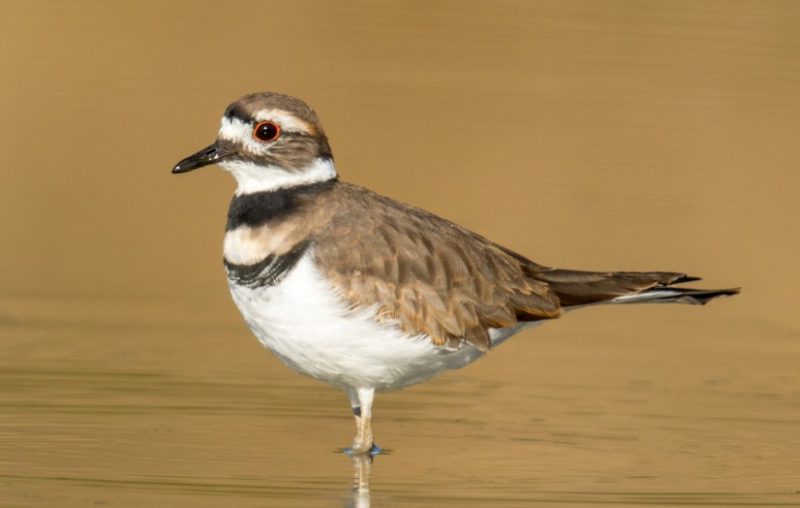
The Killdeer is a medium-sized shorebird about 9 to 11 inches long with a wingspan of 18 to 20 inches. It has brown upperparts, white underparts, two distinct black breast bands, and a rufous rump that becomes visible in flight. Its long legs and slender, pointed wings make it well adapted for running and flying over open ground.
Killdeer forage primarily on invertebrates, including insects, worms, and crustaceans, which they pick from soil, mud, or shallow water. They often employ a “broken-wing” distraction display to lure predators away from their nests. Their loud, piercing “kill-deer” call is a common sound in fields, gravel roads, and shorelines where they feed and breed.
In Wisconsin, Killdeer are widespread during the breeding season from April through August. They prefer open habitats such as pastures, mudflats, shorelines, and even gravel rooftops in urban areas. Their conspicuous calls, dramatic distraction displays, and adaptability to both natural and human-altered landscapes make them highly noticeable.
Sandhill Crane
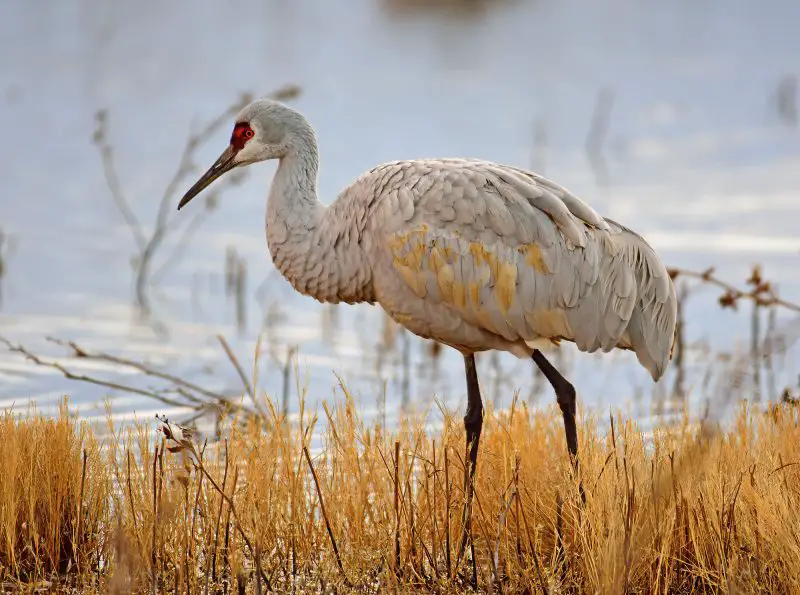
The Sandhill Crane is a large, elegant bird standing 3 to 4 feet tall with a wingspan of 6 to 7 feet. Adults have predominantly gray plumage with a red crown and white cheeks, while juveniles are browner and lack the bright red crown. Their long necks, legs, and powerful wings enable graceful flight and long-distance migration.
Sandhill Cranes feed on a combination of plant material, grains, seeds, insects, and small vertebrates. They forage in shallow wetlands, grasslands, and agricultural fields, often probing soil or mud for food. Their trumpeting calls are loud and resonant, carrying long distances and often used in pair or group communication during courtship or territory defense. Cranes are highly social, forming family groups in summer and large flocks during migration.
In Wisconsin, Sandhill Cranes are most abundant in the eastern and central parts of the state during migration in spring and fall, with breeding populations concentrated in marshes and wet meadows in northern and central regions. Their large size, striking plumage, and unmistakable calls make them one of the most iconic birds observed in the state’s wetlands.
Wild Turkey
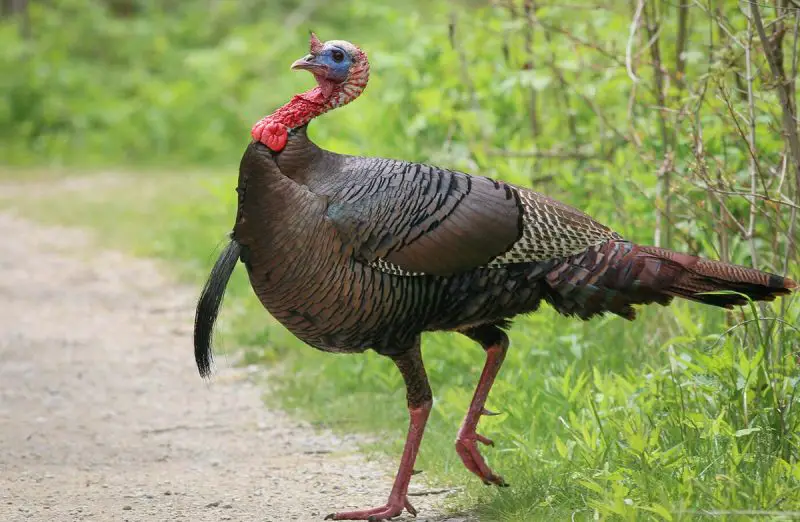
The Wild Turkey is a large ground-dwelling bird measuring 3 to 4 feet in length with a wingspan of 4.5 to 5 feet. Adult males, or toms, display iridescent bronze, green, and copper feathers, a distinctive bare red head, and a fan-shaped tail, while females are smaller with duller brown plumage for camouflage. Both sexes have long legs adapted for walking and scratching through leaf litter.
Wild Turkeys are omnivorous, feeding on acorns, nuts, seeds, berries, and insects. They forage by scratching the forest floor in woodlands, fields, and edges, moving in flocks that vary in size with the seasons. They communicate with a variety of vocalizations, including gobbles, clucks, and purrs. During the breeding season, males display elaborate strutting behaviors to attract females.
In Wisconsin, Wild Turkeys are widespread across southern and central forests, farmland edges, and wooded river valleys. Populations have rebounded thanks to conservation efforts, making them common in many state parks and rural areas. They are most visible in early morning or late afternoon when feeding in open clearings or along roadsides.
Canada Goose
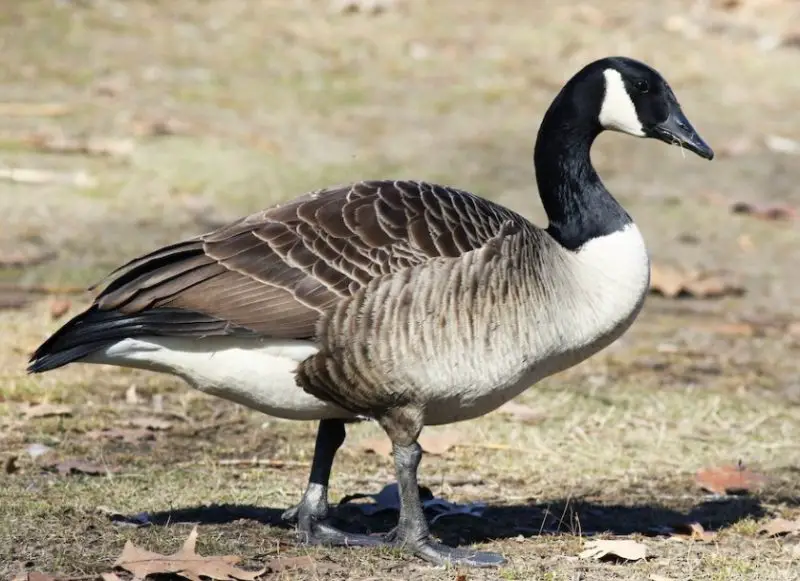
The Canada Goose is a large waterfowl species measuring 30 to 43 inches in length with a wingspan of 50 to 68 inches. Adults are easily recognized by their black head and neck, white cheek patches, and brownish-gray body. Their long necks and powerful wings make them highly visible in flight, especially during migration.
Canada Geese are herbivorous, feeding on grasses, grains, aquatic plants, and occasionally small invertebrates. They forage on land in fields and lawns or in shallow waters, often grazing in groups. Their vocalizations are loud honks used for communication within flocks, signaling alarm, and coordinating migration. These geese are highly social, often forming family groups in summer and large migratory flocks in spring and fall.
In Wisconsin, Canada Geese are both year-round residents and migrants. Large numbers gather in southern and central wetlands, lakes, rivers, and agricultural fields during migration, while resident populations frequent urban parks and suburban ponds. Their adaptability to human-altered landscapes has made them common throughout the state.
Mallard
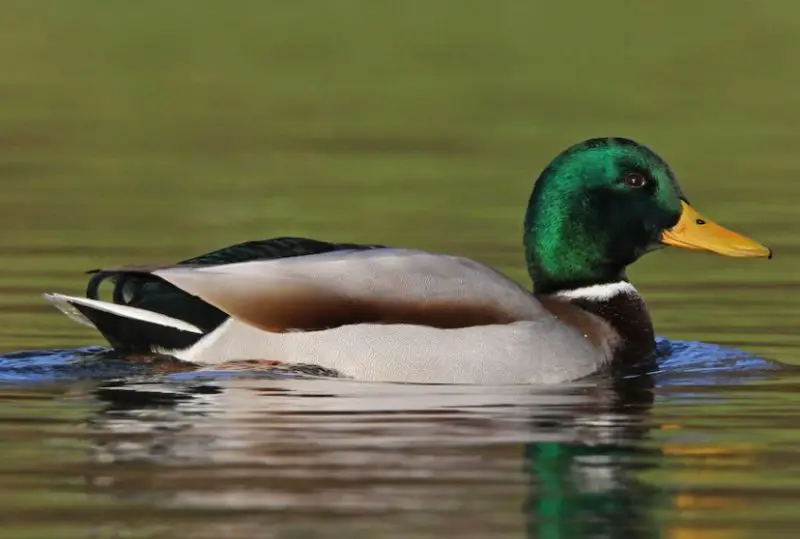
The Mallard is a medium to large dabbling duck, measuring 20 to 26 inches in length with a wingspan of 32 to 39 inches. Males are easily recognized by their glossy green head, white neck ring, chestnut-brown chest, and gray body, while females are mottled brown with an orange bill for camouflage. Both sexes have blue speculum feathers on the wings visible in flight.
Mallards feed primarily on aquatic vegetation, seeds, and small invertebrates, often dabbling on the water surface or tipping forward to reach submerged plants. They are active and gregarious, forming large flocks outside the breeding season. Their vocalizations include the well-known quacking of females and softer whistles or grunts from males. Mallards nest on the ground, usually near water, concealed in vegetation.
In Wisconsin, Mallards are widespread throughout the state, inhabiting ponds, lakes, rivers, marshes, and even urban parks. Migratory populations arrive in spring and depart in fall, while some residents remain year-round in southern and central Wisconsin where open water persists in winter. Their adaptability and abundance make them one of the most familiar waterfowl species in the state.
Bald Eagle
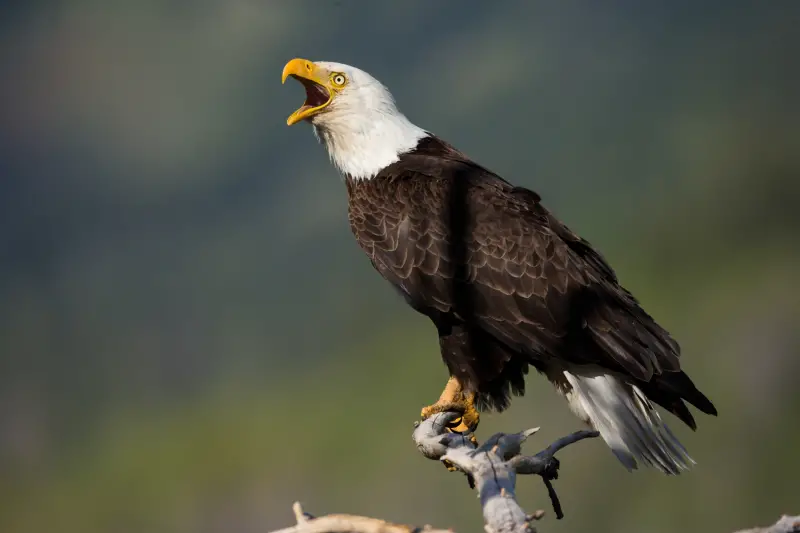
The Bald Eagle is a large raptor, measuring 28 to 40 inches in length with a wingspan of 72 to 90 inches. Adults are easily identified by their white head and tail, dark brown body and wings, and powerful yellow beak and talons. Juveniles are mottled brown and white until they reach maturity at 4 to 5 years old. Bald Eagles have keen eyesight and strong flight muscles, allowing them to hunt efficiently over large bodies of water.
Bald Eagles feed primarily on fish, capturing prey with powerful talons, but they also eat waterfowl, small mammals, and carrion. They often perch high in trees near lakes and rivers to survey for prey and are known for dramatic aerial displays during courtship. Their vocalizations are sharp, high-pitched whistles and chirps, which can be heard near nesting or roosting sites.
In Wisconsin, Bald Eagles are widespread around large lakes, rivers, and reservoirs, particularly in central and northern regions. They are most visible in winter along open water and during spring and summer breeding near forested shorelines. Conservation efforts have allowed their populations to recover, making them an iconic symbol of Wisconsin’s wildlife.
FAQs about Common Birds in Wisconsin
What are the most common birds in Wisconsin?
Some of the most common birds include American Robin, Northern Cardinal, Black-capped Chickadee, Blue Jay, Mourning Dove, House Sparrow, American Goldfinch, and Purple Finch.
When is the best time to see birds in Wisconsin?
Spring and summer are the best times to observe birds when migratory species arrive for breeding, and early mornings or late afternoons offer peak activity.
Where do birds in Wisconsin live?
Common birds inhabit forests, wetlands, grasslands, farmland, suburban gardens, and urban parks depending on their species and food preferences.
How can I attract birds to my backyard?
Providing food, water, and shelter such as feeders, native plants, and birdbaths can attract finches, sparrows, woodpeckers, and hummingbirds.
Which birds are year-round residents in Wisconsin?
Black-capped Chickadees, Northern Cardinals, Blue Jays, House Sparrows, and some Bald Eagles remain throughout the winter, often forming small flocks to find food and stay warm.

